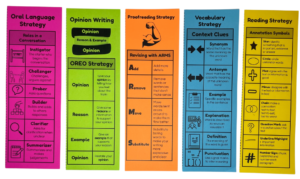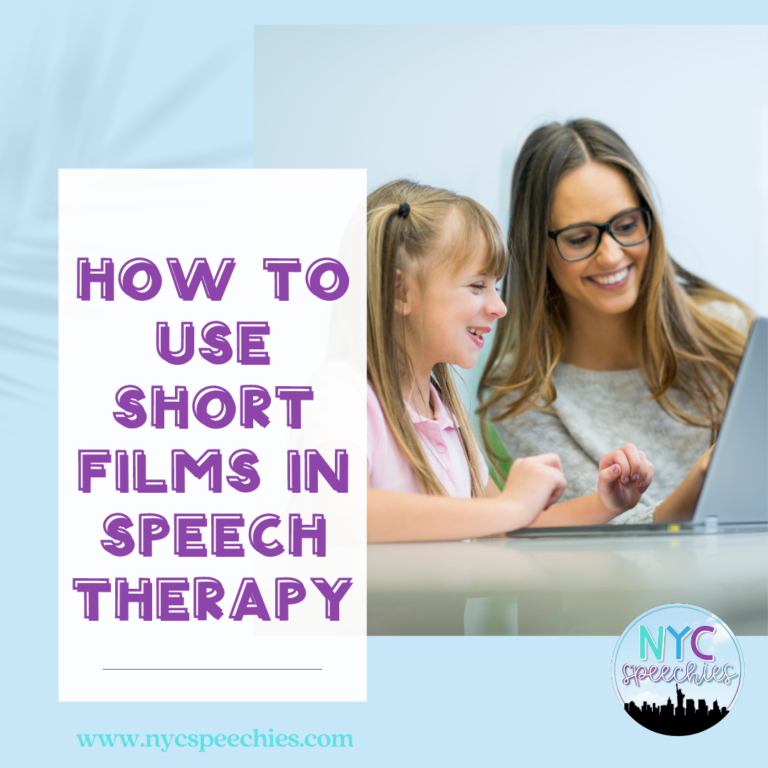Speech and Language Strategies and Rubrics
 Ever teach your students a strategy and weren’t sure how to keep track of their progress or collect data? Or after you teach the strategy, they have a hard time using the newly learned strategy in the classroom?
Ever teach your students a strategy and weren’t sure how to keep track of their progress or collect data? Or after you teach the strategy, they have a hard time using the newly learned strategy in the classroom?
We constantly found ourselves struggling when it came to finding rubrics to collect data on the strategies we were teaching our students. Sometimes we would even make up our own scoring system in our head that only made sense to us. We were constantly stressed out over not having the right rubric to use and knew we needed to create an easier way. We’ve come up with the perfect solution – we created a series of just our strategies with a rubric to go along with each specific strategy. Now you can teach any strategy to your students and collect data to monitor progress, while also providing your students with instant feedback. The Visual Reference will also help you when it comes to lesson planning.
LET US GUIDE YOUR LESSON PLANS
Lesson plans generally begin with teaching a strategy and ends with data collection. When you use our Visual Reference, it’s like everything is in one spot. The strategy you want your students to use and the rubric they will be scored with is all on one piece of paper. The Visual Reference will help guide you when writing your lesson plan. Choose the strategy (we have over 20 strategies to choose from), teach the strategy, practice the strategy by pairing it with your own activities, and then assessing the students ability to use the strategy using the accompanying rubric.
WHY ARE RUBRICS IMPORTANT?
Rubrics are super important when it comes to students being aware of your expectations. They will also be more aware of what they need to improve on the next time they use this strategy. You should review any rubric with
your student before giving it to them, this way they understand what they need to do to earn a good score. We always like to print out mini rubrics and keep them readily available. After a student practices a strategy, we can easily score their work using a mini rubric and staple it to their work. This will help keep you organized when it comes to collecting data, monitoring progress, providing instant feedback, and making students aware of how well they are using the strategy.
CARRYOVER INTO THE CLASSROOM
Another issue we came across was that our students were not remembering to use their newly learned strategies in the classroom setting, or they may need a reminder to use the strategy. So for these reasons, we created two different types of visuals for each strategy:

- Bookmarks
- These bookmarks are easily available for students when they need to refer to a strategy. Your students can keep them in their folders, notebooks, or pencil cases. They are small enough to not draw attention to themselves, making our students more willing to use them.
- Posters
- Hang in your classroom so students can easily refer to the strategies. You can even hole punch them and put them in your students binders or slip them inside a folder for easy access no matter what class they are in.
MORE HELPFUL TIPS
We suggest printing these visuals on Astrobrights colored paper so they stand out, are easy to find, and don’t get lost at the bottom of your students’ backpacks. You can even go the extra mile to laminate the print outs so they are more durable and will last longer.
Click here to grab the Strategies and Rubric Sets that will help to improve your students reading, writing, note taking, oral language, vocabulary, and thinking skills.
If this is your first time visiting NYC Speechies, welcome! We give tips to work on receptive and expressive language with the older students on our Instagram page, so make sure to follow us. And don’t forget to sign up to receive emails with updates and freebies!







